Sports have always been about pushing boundaries—of human endurance, skill, and innovation. For athletes with limb loss, the challenges are different but no less inspiring. Prosthetics designed for sports are revolutionizing the playing field, enabling athletes to compete, excel, and even redefine the limits of what’s possible.
These specialized devices are not just about replacing lost limbs; they are precision-engineered tools tailored for performance. From running blades to adaptive cycling arms, prosthetics for athletes are breaking barriers in sports technology. This article explores how these advancements are changing the game for athletes, the technology behind them, and the opportunities they present for manufacturers, designers, and athletes alike.
Power and Stability for Cyclists
Prosthetics for athletes have undergone a remarkable transformation over the past few decades. Early sports prosthetics were adaptations of everyday devices, modified for durability and functionality. While they provided basic support, they lacked the precision and specialization needed for high-performance sports.
Today, sports prosthetics are the result of interdisciplinary innovation, combining biomechanics, advanced materials, and cutting-edge engineering.
They are no longer just replacements but extensions of the athlete, designed to optimize performance, reduce fatigue, and enhance movement.
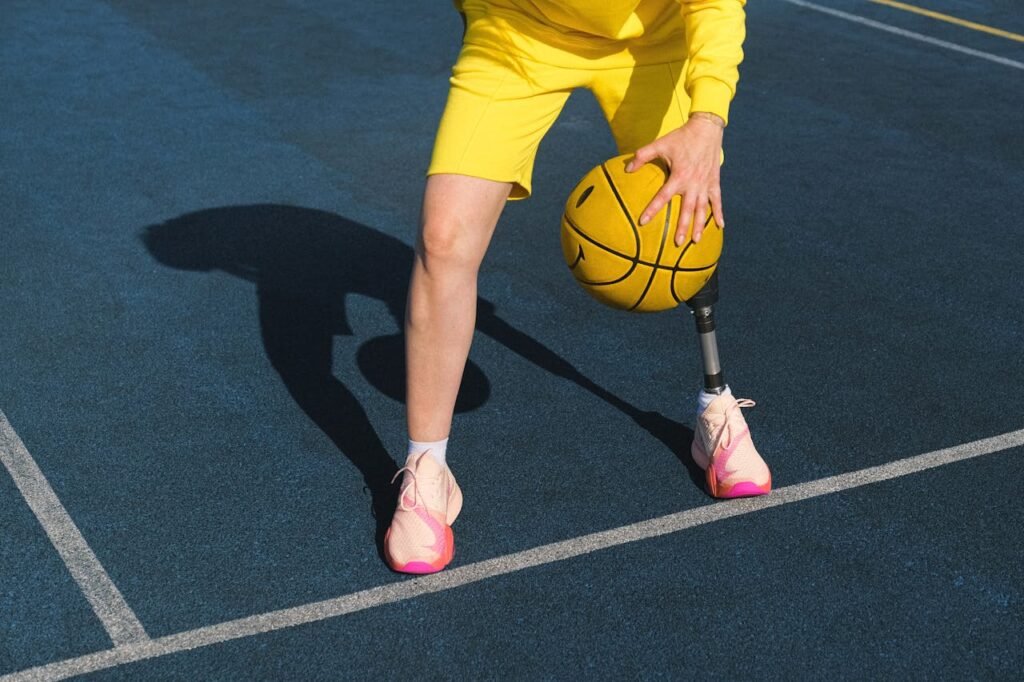
Maximizing Power Transfer
One of the most critical aspects of a cycling prosthetic is its ability to transfer power efficiently. Every pedal stroke should translate into forward momentum with minimal energy loss. Achieving this requires a prosthetic that aligns perfectly with the cyclist’s anatomy and integrates seamlessly with the bike.
Prosthetic legs for cyclists are often designed with reinforced materials such as carbon fiber or titanium to ensure rigidity without adding excessive weight. These materials allow for optimal force transmission while maintaining durability and comfort.
Businesses can further enhance power transfer by incorporating adjustable components. For instance, a prosthetic foot designed for cycling could feature customizable angles to match the rider’s natural pedaling motion.
Offering these adjustments not only improves performance but also allows cyclists to fine-tune their setup for different riding conditions, such as flat roads or steep climbs.
Ensuring Stability and Control
Stability is equally important for cyclists, particularly when navigating uneven terrain or making sharp turns. A cycling prosthetic must provide a secure connection to the bike while allowing the rider to maintain balance and control.
For upper-limb prosthetics, grip strength and wrist flexibility are key factors. Prosthetic arms designed for cycling often include ergonomic handles that lock securely onto the handlebars, minimizing the risk of slippage during intense rides. Some designs also feature shock-absorbing mechanisms to reduce strain on the rider’s shoulder and torso.
Lower-limb prosthetics require a secure interface with the pedal. Clip-in designs, which attach directly to the pedal system, are popular among competitive cyclists as they enhance stability and power efficiency. However, these systems must be carefully engineered to allow quick release in case of emergencies, ensuring rider safety.
For businesses, developing user-friendly attachment systems is a strategic priority. Collaborating with cycling equipment manufacturers to standardize compatibility can simplify the adoption process for users and strengthen brand partnerships.
Adapting to Diverse Cycling Disciplines
Cycling encompasses a wide range of disciplines, from road racing and mountain biking to track cycling and BMX. Each discipline places unique demands on both the rider and their equipment.
A prosthetic designed for a road cyclist prioritizes aerodynamics and endurance, while a mountain biking prosthetic must withstand the rigors of off-road trails.
To address these diverse needs, businesses can adopt a modular design approach. Modular cycling prosthetics allow riders to switch between components optimized for specific activities.
For example, a cyclist could swap out a lightweight road attachment for a more robust mountain biking setup, all using the same base prosthetic.
Integrating Smart Technologies
The integration of smart technology into cycling prosthetics represents a significant opportunity for innovation. Sensors embedded in the prosthetic can monitor metrics such as cadence, power output, and balance, providing real-time feedback to the rider.
This data not only helps cyclists optimize their performance but also enhances safety. For instance, a smart prosthetic could alert the rider to imbalances that may lead to falls or overuse injuries.
Businesses entering the smart prosthetics market must prioritize intuitive interfaces and seamless connectivity with existing cycling tools, such as GPS devices and training apps.
Developing proprietary software or partnering with tech companies to create integrated ecosystems can add significant value for users.

Creating an Inclusive Cycling Community
Cycling is more than a sport; it’s a community that fosters camaraderie, resilience, and personal growth. Prosthetics designed for cyclists are not just performance tools—they are enablers of inclusion and participation.
For businesses, contributing to this community goes beyond product development. Organizing events such as adaptive cycling workshops or sponsoring inclusive races can strengthen brand identity and showcase a commitment to empowering athletes.
Providing resources like training guides or technical support for new riders further enhances the user experience.
Tailoring Prosthetics to Athletic Needs
Every sport requires specific movements, strength, and endurance. A prosthetic that excels in one activity may not perform as well in another. This is why customization is at the heart of sports prosthetic design.
Precision for Runners
Running blades are perhaps the most iconic example of sports prosthetics. These carbon fiber devices mimic the spring action of tendons, propelling athletes forward with remarkable efficiency. Unlike traditional prosthetics, running blades are lightweight and streamlined, reducing drag and allowing for faster speeds.
For runners, the fit and alignment of the blade are critical. Even minor discrepancies can affect stride and performance. Advanced scanning and modeling techniques help ensure that the prosthetic aligns perfectly with the user’s anatomy and running style.
Businesses that focus on this level of precision can gain a competitive edge, offering athletes the tools they need to reach peak performance.
Power and Stability for Cyclists
Cyclists require prosthetics that provide power transfer and stability. Prosthetic arms for adaptive cycling, for example, must allow for firm grip and control while minimizing strain on the shoulder and torso.
Designing prosthetics for cycling involves balancing rigidity and flexibility. The device must be strong enough to handle the repetitive forces of pedaling yet adaptable enough to accommodate varying terrains.
Materials like titanium and advanced polymers are often used to achieve this balance, offering both strength and lightweight properties.
For businesses, collaborating with professional athletes and sports scientists can provide valuable insights into these requirements, leading to prosthetic designs that perform reliably under demanding conditions.
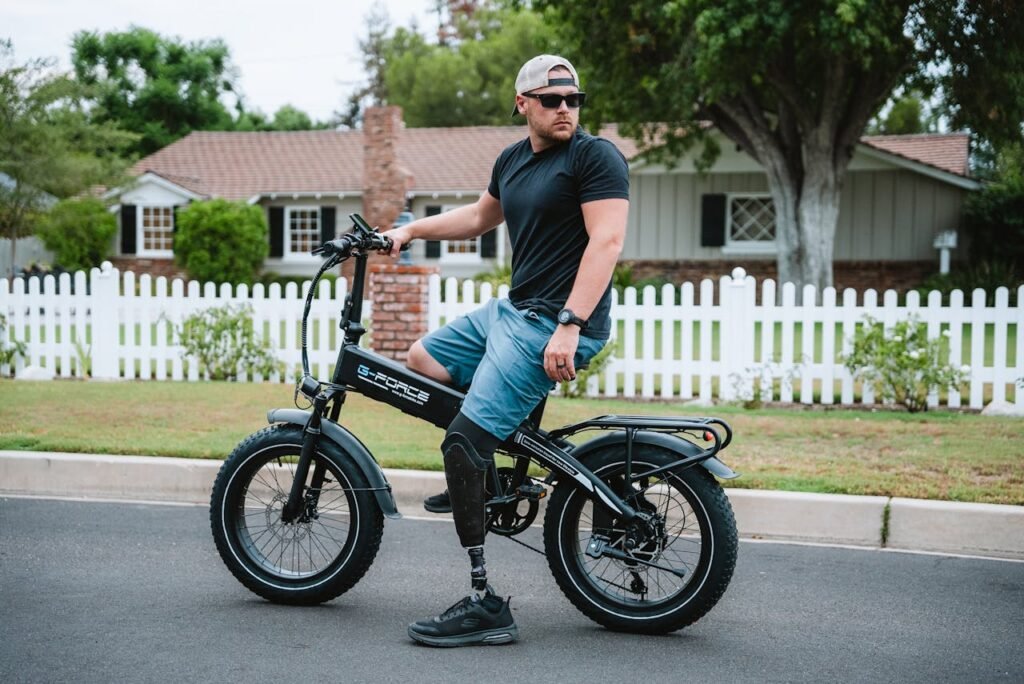
Adaptability for Multi-Sport Athletes
Athletes who participate in multiple sports face unique challenges. Their prosthetics must be versatile, durable, and easy to adjust for different activities. Modular designs are particularly effective in this context, allowing users to swap components, such as feet or arms, depending on the sport.
For example, a modular leg prosthetic might include a blade for running, a flat sole for weightlifting, and a specialized attachment for swimming.
This adaptability not only enhances performance but also reduces the need for multiple prosthetic devices, making sports participation more accessible and affordable.
The Role of Technology in Sports Prosthetics
Technology plays a pivotal role in advancing sports prosthetics, driving improvements in design, functionality, and user experience. From AI-driven adjustments to real-time performance tracking, technology is reshaping how athletes interact with their prosthetics.
Biomechanics and Motion Analysis
Understanding the biomechanics of sports movements is essential for creating effective prosthetics. Motion analysis systems use cameras, sensors, and software to study how athletes move, identifying areas where a prosthetic can enhance performance or reduce strain.
For businesses, investing in motion analysis technology provides a competitive advantage. By incorporating data-driven insights into the design process, companies can create prosthetics that align with the natural dynamics of the sport, improving comfort and efficiency for the athlete.
Smart Prosthetics
Smart prosthetics equipped with sensors and microprocessors are transforming sports technology. These devices can adjust in real-time, adapting to changes in terrain, speed, or activity. For instance, a smart running blade might alter its stiffness based on the user’s stride or the surface they are running on.
Businesses entering the smart prosthetics market must prioritize user-friendly interfaces and robust software systems. Partnering with AI developers and sensor manufacturers can accelerate innovation and ensure that the final product meets the high demands of competitive sports.
Lightweight Materials for Peak Performance
The choice of materials in sports prosthetics directly impacts an athlete’s performance. Carbon fiber, known for its strength-to-weight ratio, is a popular choice for high-performance devices.
Other advanced materials, such as graphene and reinforced polymers, are being explored to further reduce weight while enhancing durability.
For businesses, staying ahead in material science is essential. Collaborating with material researchers and exploring emerging composites can lead to breakthroughs that set a product apart in the competitive sports prosthetics market.
Business Strategies for Advancing Sports Prosthetics
The sports prosthetics market is dynamic and highly specialized. For businesses, succeeding in this space requires a strategic approach that blends innovation, collaboration, and a deep understanding of athlete needs.
By focusing on user-centric design, leveraging technology, and creating sustainable business models, companies can position themselves as leaders in this growing industry.
Partnering with Athletes for Real-World Insights
Athletes are the ultimate experts when it comes to their sport-specific needs. Partnering with professional and amateur athletes allows businesses to gain firsthand insights into the challenges and opportunities associated with sports prosthetics.
These collaborations can take the form of product testing, focus groups, or long-term sponsorships.
By involving athletes in the design and development process, businesses can create prosthetics that are not only technically superior but also aligned with the practical realities of competitive sports.
Athlete endorsements also serve as powerful testimonials, building trust and credibility with potential customers.
Customization as a Competitive Edge
Personalization is critical in sports prosthetics, where even small adjustments can have a significant impact on performance. Businesses that prioritize customization can differentiate themselves in the market by offering solutions tailored to individual athletes.
This might involve designing prosthetics for specific sports or incorporating unique features based on user feedback. Digital platforms that allow athletes to input their measurements, preferences, and goals can streamline the customization process, making it accessible to a wider audience.
Additionally, modular designs can enhance the value proposition by enabling athletes to adapt their prosthetics for different activities.
For example, a sprinter may need a high-performance blade for competition and a more casual attachment for training. Offering these options demonstrates a commitment to versatility and long-term user satisfaction.
Investing in Research and Development
Innovation in sports prosthetics is driven by research and development (R&D). Businesses that invest in R&D are better equipped to introduce groundbreaking products that push the boundaries of performance and comfort.
This includes exploring new materials, refining biomechanical designs, and integrating smart technologies such as sensors and AI. Collaborating with academic institutions, research labs, and sports organizations can accelerate these efforts, providing access to expertise and funding.
For example, partnerships with biomechanics researchers can lead to insights into movement patterns, informing the development of prosthetics that align with natural dynamics.
Similarly, collaborating with material scientists can yield lighter and stronger components, enhancing overall performance.
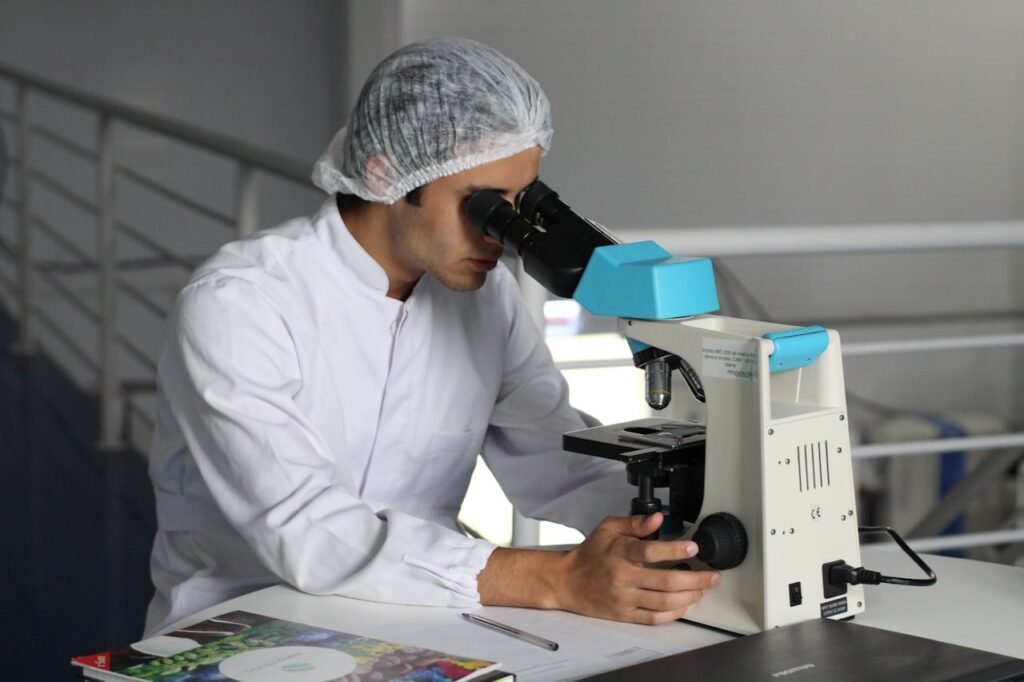
The Athlete’s Experience: A Life Transformed
For athletes with limb loss, the right prosthetic can be life-changing. Beyond physical functionality, sports prosthetics provide a sense of empowerment, enabling individuals to pursue their passions and compete on equal footing.
Breaking Down Barriers
Prosthetics designed for sports are more than tools—they are symbols of resilience and determination. For many athletes, these devices represent the ability to overcome physical challenges and achieve goals that once seemed out of reach.
Breaking barriers also extends to inclusivity. Sports prosthetics allow individuals to participate in activities that promote mental and emotional well-being, fostering a sense of community and belonging.
This inclusivity is particularly important for young athletes, who benefit from the confidence and camaraderie that sports provide.
Pioneering New Standards in Competition
Elite athletes using sports prosthetics are challenging traditional notions of ability and performance. Figures like Paralympic champions have demonstrated that with the right tools, athletes with limb loss can achieve extraordinary feats.
For businesses, supporting these athletes goes beyond product development—it’s about fostering a culture of excellence and advocacy.
Sponsoring events, organizing training camps, or creating mentorship programs for emerging athletes are ways to contribute to the broader sports ecosystem while showcasing the capabilities of advanced prosthetics.
The Future of Sports Prosthetics
The future of sports prosthetics is bright, driven by ongoing advancements in technology and an increasing emphasis on inclusivity. For businesses, staying ahead of these trends is essential to remain competitive and impactful in the industry.
Integrating Neural Interfaces
Neural interfaces are poised to revolutionize sports prosthetics by enabling direct communication between the athlete’s brain and the prosthetic.
This technology promises greater precision, faster response times, and a more natural connection between the user and their device.
For example, a neural interface could allow a runner to fine-tune their stride or a swimmer to adjust their stroke mid-performance. Businesses that invest in this technology now can position themselves as pioneers in the next generation of sports prosthetics.
Expanding Accessibility
Making sports prosthetics more accessible is a growing priority. Advanced devices often come with high price tags, limiting access for many athletes.
Businesses must explore strategies to reduce costs while maintaining quality, such as leveraging 3D printing for scalable production or collaborating with non-profits to subsidize costs.
Local manufacturing and distribution networks can also play a role in improving accessibility. By producing prosthetics closer to the communities they serve, businesses can reduce logistical costs and provide faster service.
Sustainability in Sports Prosthetics
As environmental concerns grow, sustainability will become a key focus in sports prosthetic design.
Businesses that adopt eco-friendly practices, such as using recycled materials or reducing waste in manufacturing, will not only meet regulatory requirements but also appeal to socially conscious consumers.
Sustainability also includes creating durable, long-lasting prosthetics that minimize the need for frequent replacements.
By prioritizing quality and lifecycle management, businesses can enhance user satisfaction and reduce their environmental impact.
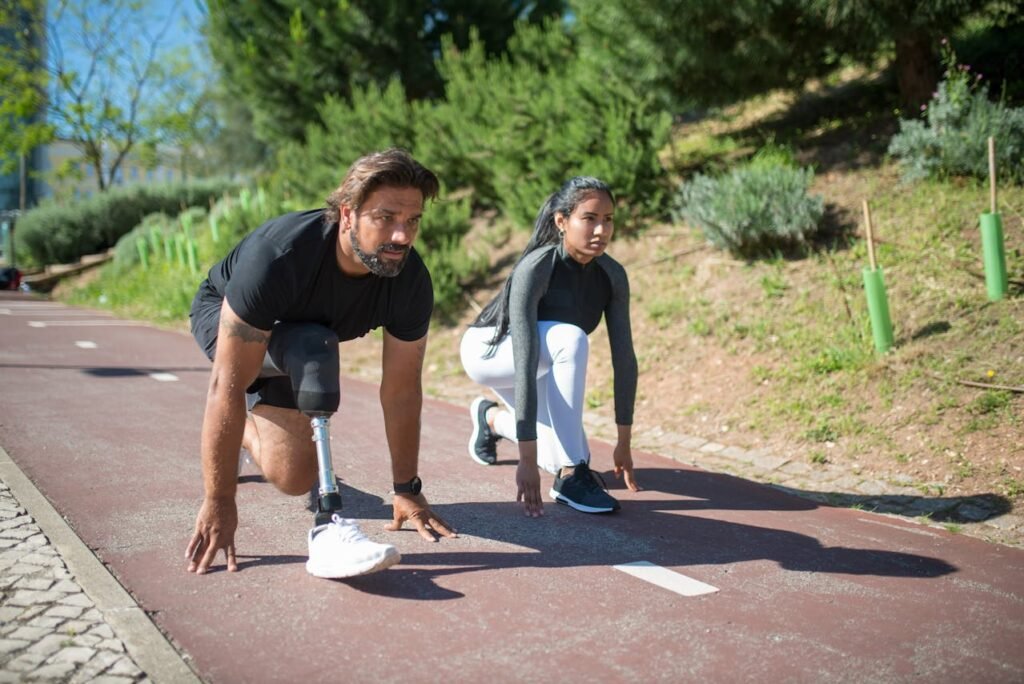
Breaking Down Barriers
Prosthetics designed for sports are more than tools—they are symbols of resilience and determination. For many athletes, these devices represent the ability to overcome physical challenges and achieve goals that once seemed out of reach.
Breaking barriers also extends to inclusivity. Sports prosthetics allow individuals to participate in activities that promote mental and emotional well-being, fostering a sense of community and belonging.
This inclusivity is particularly important for young athletes, who benefit from the confidence and camaraderie that sports provide.
Pioneering New Standards in Competition
Elite athletes using sports prosthetics are challenging traditional notions of ability and performance. Figures like Paralympic champions have demonstrated that with the right tools, athletes with limb loss can achieve extraordinary feats.
For businesses, supporting these athletes goes beyond product development—it’s about fostering a culture of excellence and advocacy.
Sponsoring events, organizing training camps, or creating mentorship programs for emerging athletes are ways to contribute to the broader sports ecosystem while showcasing the capabilities of advanced prosthetics.
The Future of Sports Prosthetics
The future of sports prosthetics is bright, driven by ongoing advancements in technology and an increasing emphasis on inclusivity. For businesses, staying ahead of these trends is essential to remain competitive and impactful in the industry.
Integrating Neural Interfaces
Neural interfaces are poised to revolutionize sports prosthetics by enabling direct communication between the athlete’s brain and the prosthetic.
This technology promises greater precision, faster response times, and a more natural connection between the user and their device.
For example, a neural interface could allow a runner to fine-tune their stride or a swimmer to adjust their stroke mid-performance.
Businesses that invest in this technology now can position themselves as pioneers in the next generation of sports prosthetics.
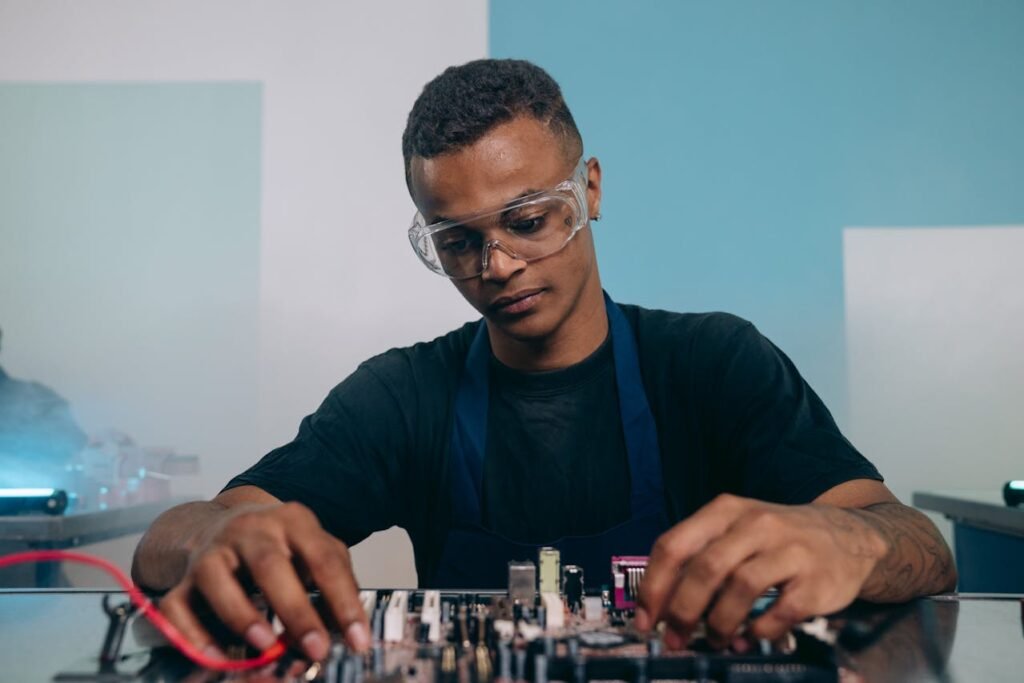
Expanding Accessibility
Making sports prosthetics more accessible is a growing priority. Advanced devices often come with high price tags, limiting access for many athletes.
Businesses must explore strategies to reduce costs while maintaining quality, such as leveraging 3D printing for scalable production or collaborating with non-profits to subsidize costs.
Local manufacturing and distribution networks can also play a role in improving accessibility. By producing prosthetics closer to the communities they serve, businesses can reduce logistical costs and provide faster service.
Sustainability in Sports Prosthetics
As environmental concerns grow, sustainability will become a key focus in sports prosthetic design.
Businesses that adopt eco-friendly practices, such as using recycled materials or reducing waste in manufacturing, will not only meet regulatory requirements but also appeal to socially conscious consumers.
Sustainability also includes creating durable, long-lasting prosthetics that minimize the need for frequent replacements.
By prioritizing quality and lifecycle management, businesses can enhance user satisfaction and reduce their environmental impact.
Conclusion
Sports prosthetics have transcended their role as simple mobility aids to become precision-engineered tools that empower athletes to achieve extraordinary feats.
These devices break down barriers, foster inclusivity, and redefine what’s possible in competitive and recreational sports.
From running blades that propel Paralympic champions to modular designs that enable multi-sport versatility, the advancements in sports prosthetics highlight the power of innovation to transform lives.
For businesses, the sports prosthetics market represents a unique opportunity to blend cutting-edge technology with user-focused design.
By investing in research and development, collaborating with athletes, and leveraging advancements in AI, materials science, and biomechanics, companies can create prosthetics that not only meet the needs of today’s athletes but set the stage for future breakthroughs.



